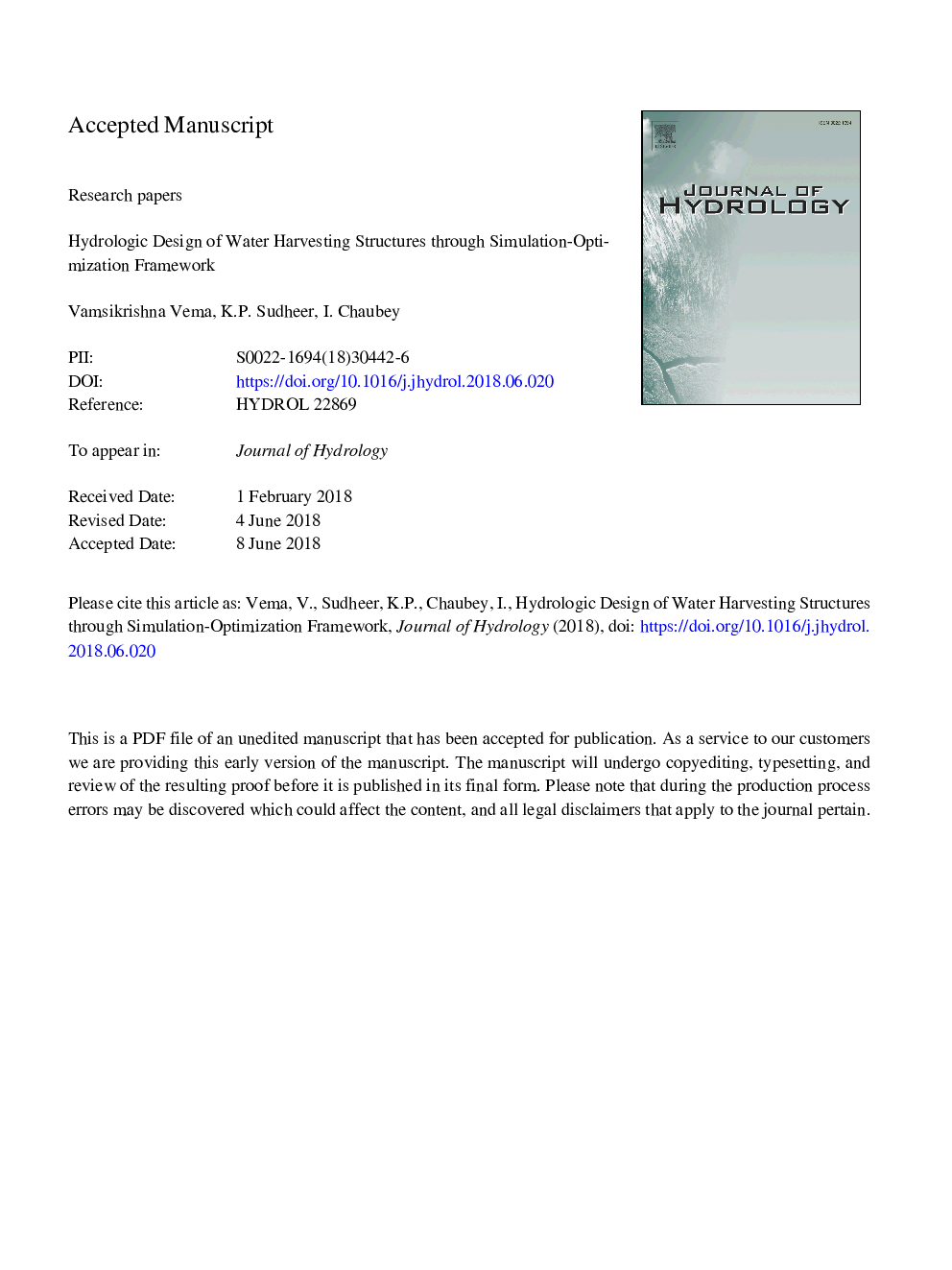| Article ID | Journal | Published Year | Pages | File Type |
|---|---|---|---|---|
| 8894581 | Journal of Hydrology | 2018 | 35 Pages |
Abstract
Watershed management in rainfed agricultural areas of arid and semi-arid regions aims at alleviating agricultural drought by employing water conservation measures. Water conservation measures serve as mechanisms for recharging groundwater, and also for surface storage. While the benefits derived from these structures is widely accepted, there is increasing concern regarding their sustainability and efficiency. The application of water conservation measures in upstream reaches contributes to reduced inflows to downstream reaches and structures. Currently watershed management is planned by considering elementary information about the hydrological regime and its associated impacts on the upstream reaches of the watershed. This approach may lead to inefficient water conservation structures, and there is also a significant probability that the structure may be under designed (or over designed). Therefore, careful planning that considers the hydrological changes that the conservation structure may bring in the watershed and the associated benefits/compromise for both upstream and downstream is essential for developing a successful watershed management plan. A simulation-optimization framework for optimal sizing of the water conservation structure considering the dual objectives of improving the benefits in the upstream reaches while maintaining flows in the downstream reaches is proposed in this study. The proposed method is demonstrated for optimal sizing of water conservation structures (check dams in this study) for an experimental watershed in Kondepi Mandal, Andhra Pradesh, India. The results indicate that the check dams of sizes obtained from both traditional method and simulation-optimization method increase moisture availability in the watershed. However, for check dam sizes obtained from the simulation-optimization framework, there is an increase in the flow to downstream reaches compared to the check dam sizes obtained from the traditional methods. The increase in downstream flows obtained by optimizing the check dam heights is at the expense of increased moisture stress days in the non-growing period, thus, not affecting the crop growth or productivity. The results from this study indicate that the proposed simulation-optimization framework can be of assistance in sizing of check dams for sustainable and effective watershed management.
Related Topics
Physical Sciences and Engineering
Earth and Planetary Sciences
Earth-Surface Processes
Authors
Vamsikrishna Vema, K.P. Sudheer, I. Chaubey,
